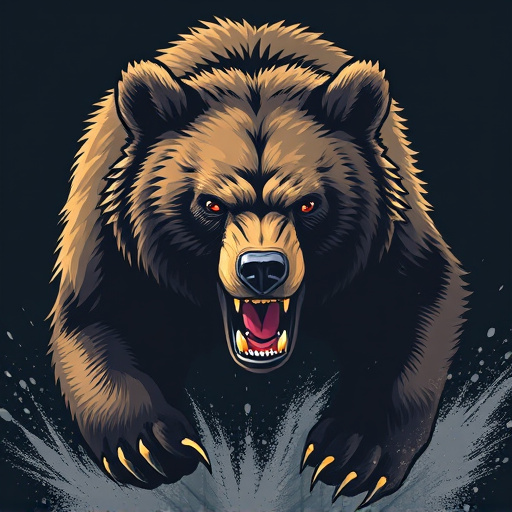Bear spray effectiveness against aggressive bears depends on capsaicin percentage (17%-34%), which creates an irritant barrier in the air upon inhalation, deterring bears up to 20-30 feet. Choose bear spray with 15%-20% capsaicin for optimal safety. Proper application techniques, aiming at the bear's face and eyes within this range, are crucial. Combine bear spray with other deterrents like horns, noise makers, secure food storage, and protective clothing for enhanced safety in high-risk areas.
In regions inhabited by aggressive bears, understanding and preparing for potential encounters is paramount. One of the most popular tools for deterring bears is bear spray—a potent chemical solution designed to protect hikers, campers, and outdoor enthusiasts. This article delves into the effectiveness of bear spray, focusing on the crucial aspect of bear spray active ingredient percentage. We’ll guide you through choosing the right spray, proper application techniques, and additional safety measures beyond just spray.
- Understanding Bear Spray Effectiveness
- Choosing Bear Spray: Active Ingredient Percentage Matters
- Application Techniques for Maximum Protection
- Beyond Spray: Additional Safety Measures for Aggressive Bears
Understanding Bear Spray Effectiveness
Bear spray is a popular and effective deterrent for avoiding aggressive bear encounters outdoors. However, understanding its effectiveness requires knowledge about the active ingredient percentage. Typically, bear spray contains between 17% and 34% of capsaicin, the primary active ingredient derived from chili peppers. This high concentration is what makes it so potent, causing bears to recoil upon inhalation.
The specific percentage can vary among brands, with higher concentrations offering longer-lasting protection. During usage, the spray creates a barrier of irritants in the air, deterring bears from approaching. While not a guaranteed solution, bear spray has proven effective in preventing attacks and providing valuable time for escape or retreat in potentially dangerous situations.
Choosing Bear Spray: Active Ingredient Percentage Matters
When selecting bear spray, one of the most critical factors to consider is the active ingredient percentage. The active ingredient is what deters and repels bears when sprayed in their face. Common active ingredients include capsicum (pepper), oleoresin capsaicin (a derivative of chili peppers), and canola oil with capsaicin.
The effectiveness of bear spray varies based on the concentration of these active ingredients. Many expert recommendations suggest opting for bear spray containing at least 15% to 20% capsaicin or a similar active ingredient. This concentration range ensures that the spray is potent enough to deter aggressive bears, providing users with a higher chance of safety in potentially dangerous encounters.
Application Techniques for Maximum Protection
To ensure maximum protection against aggressive bears, proper application techniques for bear spray are crucial. When using bear spray, it’s essential to understand that the effectiveness depends on several factors, including the active ingredient percentage and your distance from the bear. Typically, bear sprays contain capsaicin, the active ingredient derived from chili peppers, which irritates a bear’s eyes, nose, and respiratory system.
For optimal results, aim for the bear’s face and eyes directly. The recommended distance to spray varies between 20-30 feet (6-9 meters), but it’s crucial to read the product label for specific instructions. Spraying too far may reduce effectiveness due to dilution in the air, while spraying too close could result in self-injury. Practice with a training can to get a feel for the spray pattern and range before encountering a bear in the wild.
Beyond Spray: Additional Safety Measures for Aggressive Bears
While bear spray remains an essential tool for deterring aggressive bears, it’s just one aspect of a comprehensive safety strategy. Understanding the active ingredient percentage in bear spray is crucial—typically around 20%—but knowing when and how to use it effectively is equally important.
Beyond bear spray, carrying other essential items like air horns or noisemakers can provide additional protection. Staying aware of your surroundings, making noise while hiking, and avoiding unexpected encounters are key preventive measures. Additionally, properly securing food in bear-resistant containers and wearing protective clothing in high-risk areas offer extra layers of safety when navigating territories known for aggressive bear activity.
When facing aggressive bears in the outdoors, armed with knowledge and the right tools, you can significantly enhance your safety. While bear spray remains an essential defense, understanding its effectiveness and choosing sprays with higher active ingredient percentages can make all the difference. Proper application techniques and additional safety measures, such as making noise and maintaining a defensive posture, further reduce risk. By combining these strategies, outdoor enthusiasts can confidently navigate bear country, ensuring a safer and more enjoyable experience in nature’s embrace.
